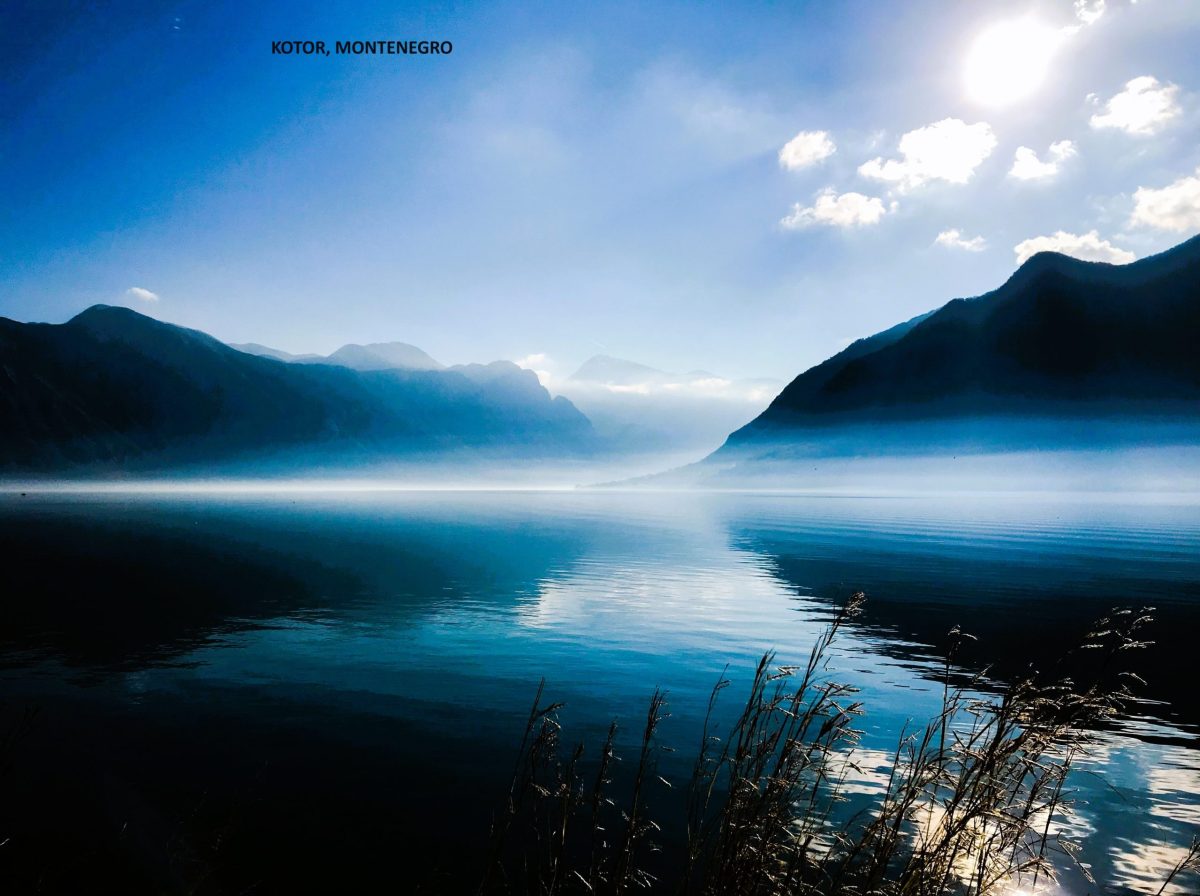L’Isle Sur la Sorgue was always going to be a hard act to follow and I must, therefore, keep an open mind as I describe Gordes. I agree Gordes is one of Provence’s prettiest hillside villages and it is certainly a worthy member of France’s ‘plus beaux villages’ but, for it to be portrayed as “the prettiest village in France” and “the Parthenon of the Luberon” (as it is in some travel blogs) is rather stretching matters.
I think the place is overrated. It benefits from being on an established tourist trail that includes the Abbey of Senanque (which features in countless photos of the Provence lavender fields and is less than 5 kilometres away) and the Village des Bories (France’s answer to the Puglian Trulli and only 2 kilometres away). Add to this that Peter Mayle’s best selling book “A Year In Provence” mentions Gordes and that several hotels were built in the village around the time his book was published (1989) and it strikes me that over the last 30 years Gordes has received a hugely disproportionate degree of promotion and praise from local property developers and travel agents as thousands of tourists were channeled through the area from nearby Avignon, Aix en Provence and even Marseilles. It’s pretty but it’s not that pretty and it gets far too many coach tours to rank amongst the best villages in Provence, let alone France.
Having said all that, on a sunny day it’s white and ochre coloured buildings and terracotta roof tiles are stunning whether viewed from afar or up close and the views across the Cavalon Valley towards the Luberon Massif are tremendous.
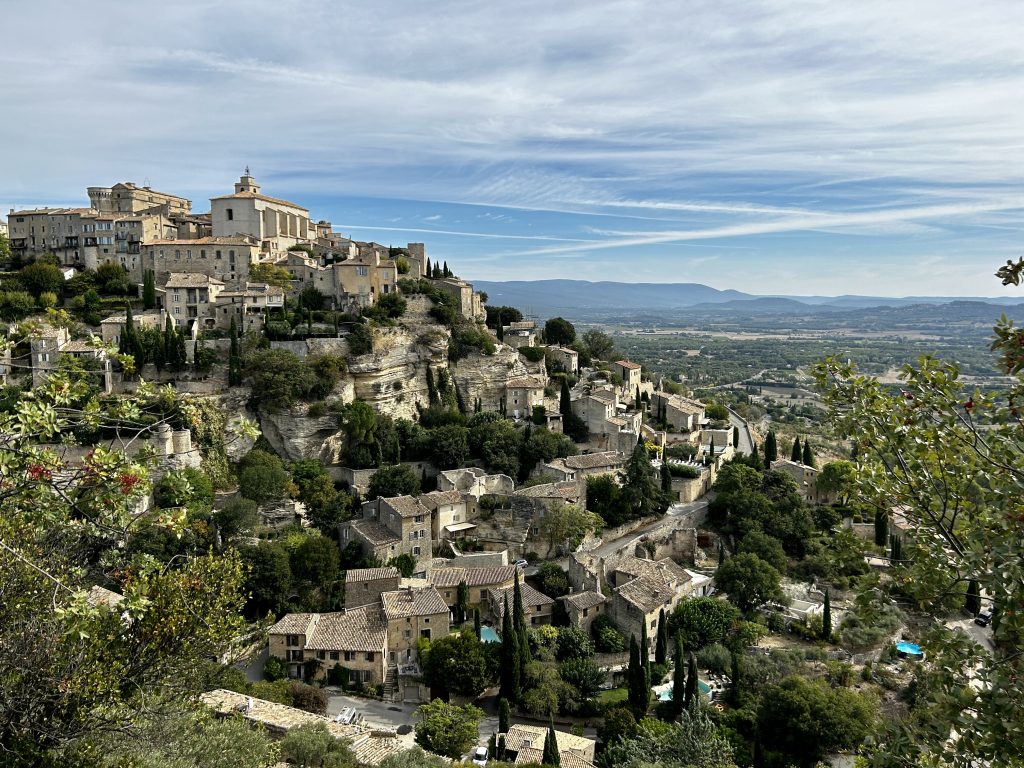
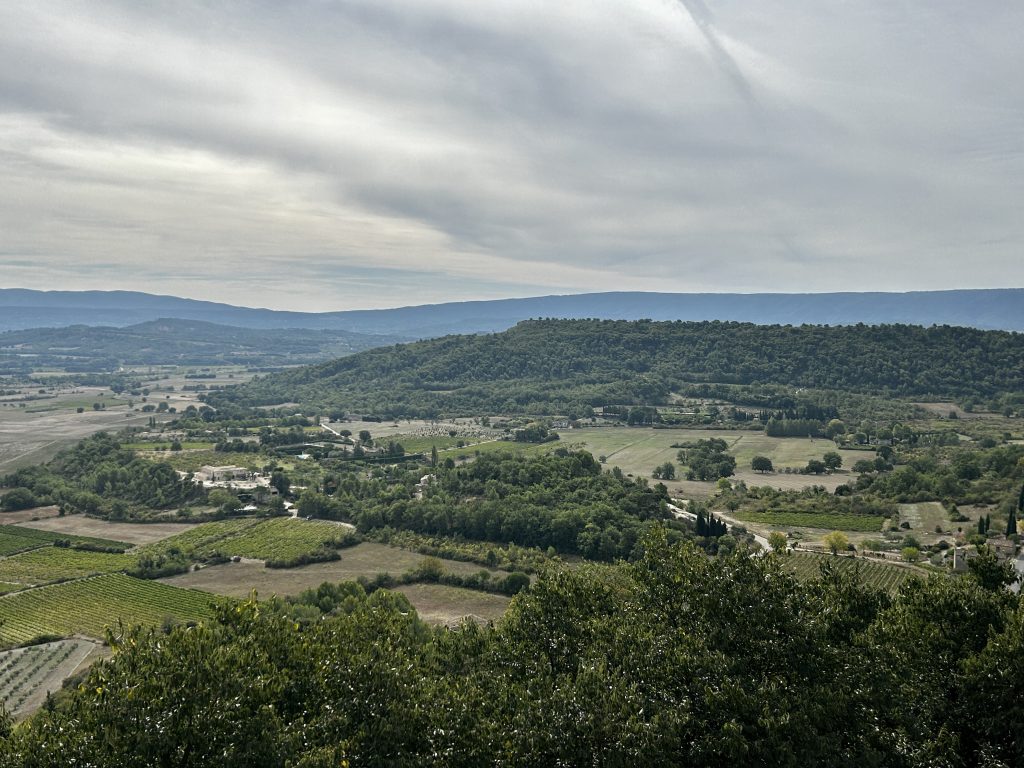
A medieval castle, the Chateau de Gordes, towers over the village. It’s an austere and forbidding fortress and, despite being modified in the 16th century (an attempt to turn it into a residence), not one of it’s owners has chosen to make it their home. Instead, it has served as a barracks for passing friendly forces, a prison and, believe it or not, a boy’s school. As I write this I am reminded of the boarding school I attended for a while in the mid sixties. Sorry, I digress, the castle also housed the town hall, the village post office and a pharmacy for a while after being acquired by the local council authority. Nowadays it doubles as a home to the village tourist office and as an art gallery & museum. I understand there’s a second quite unusual museum in Gordes in the shape of the St Firmin Palace Caves and I was tempted to visit but, we had the dogs with us and dogs and museums simply don’t mix.
The most impressive aspects of Gordes, and the most photogenic, are the church (L’Eglise Saint Firmin) and, most especially, the steep, narrow alleys known locally as ‘calades’. Many of these calades, particularly those in the steeper parts of the village where all the houses sit at different levels, have small steps running down their centre to help people move more easily up and down the tight little spaces. My favourite part of the village is down near the foot of the village in an area known as the Fontaine Basse, where there are old wash houses, a mill and what appear to be a couple of small chapels (and, dare I add, very few tourists).

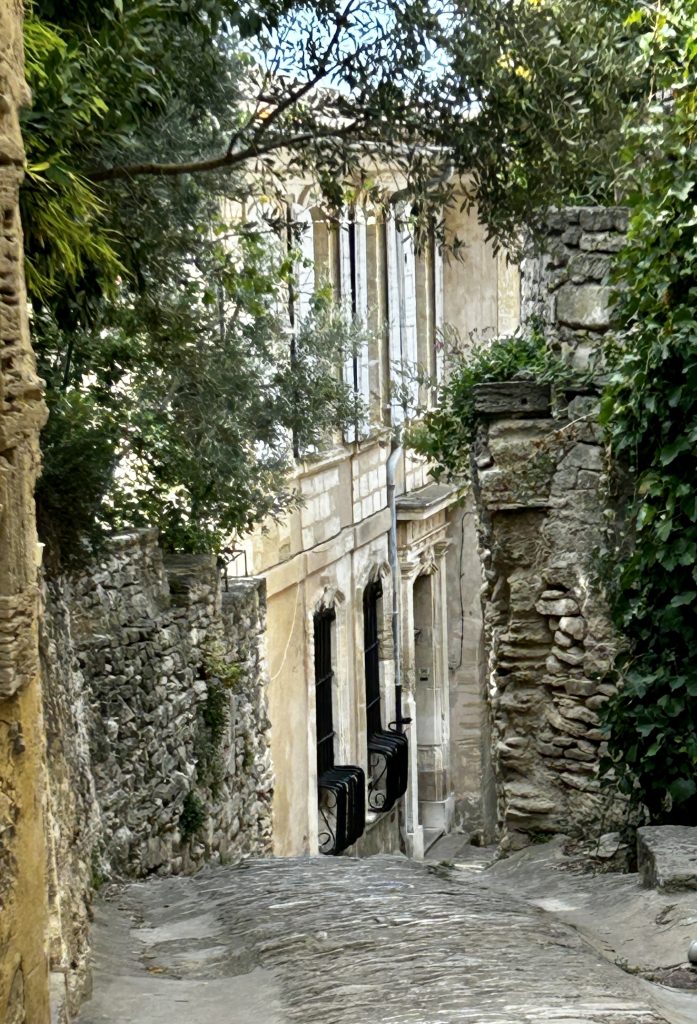
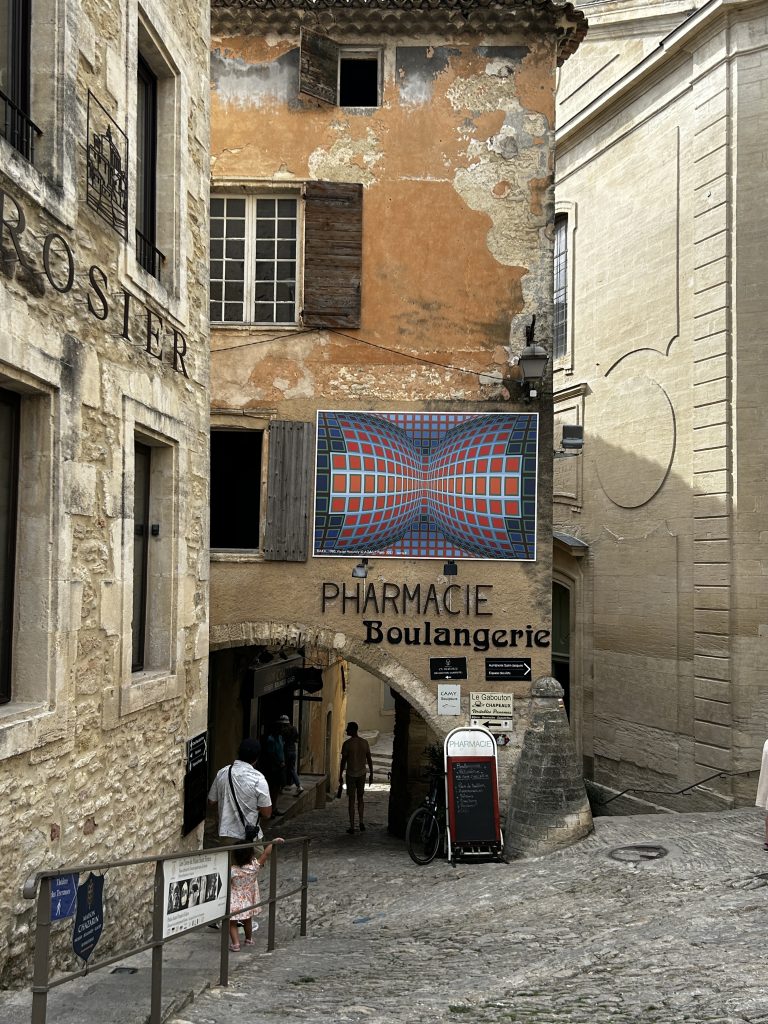
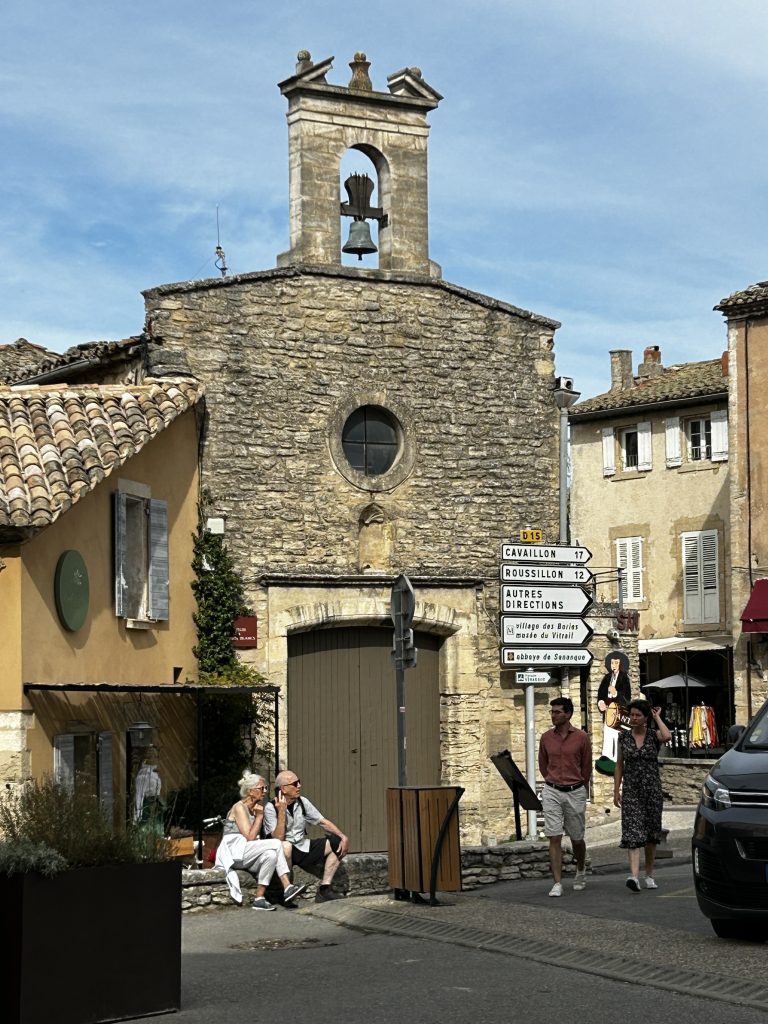
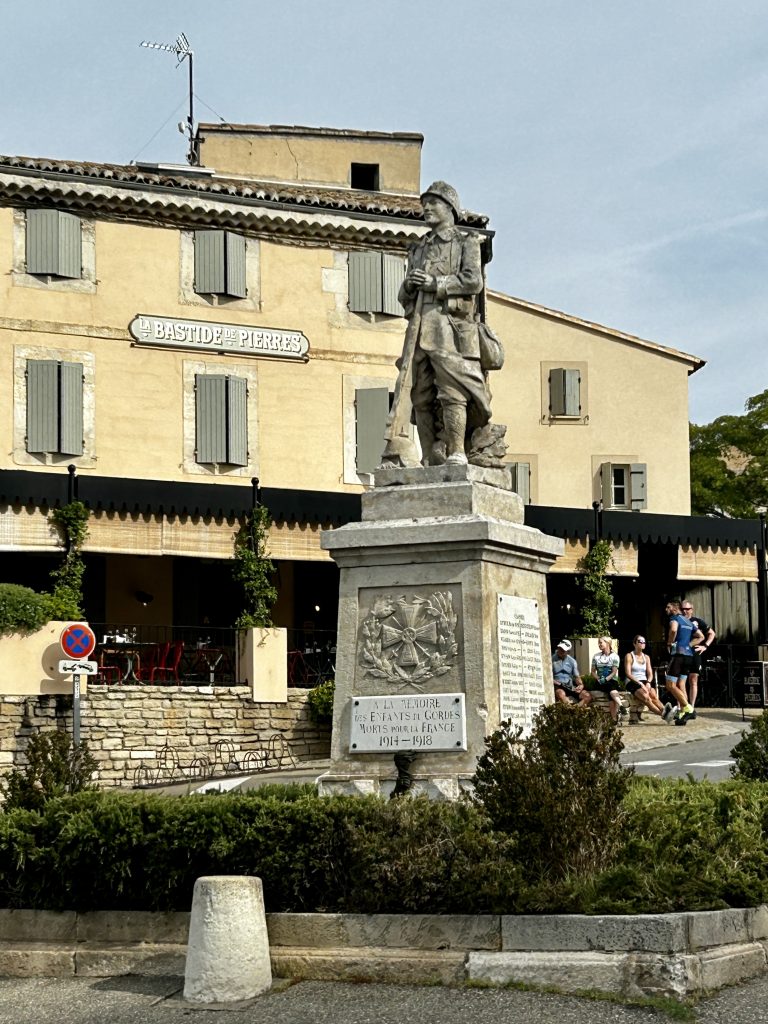
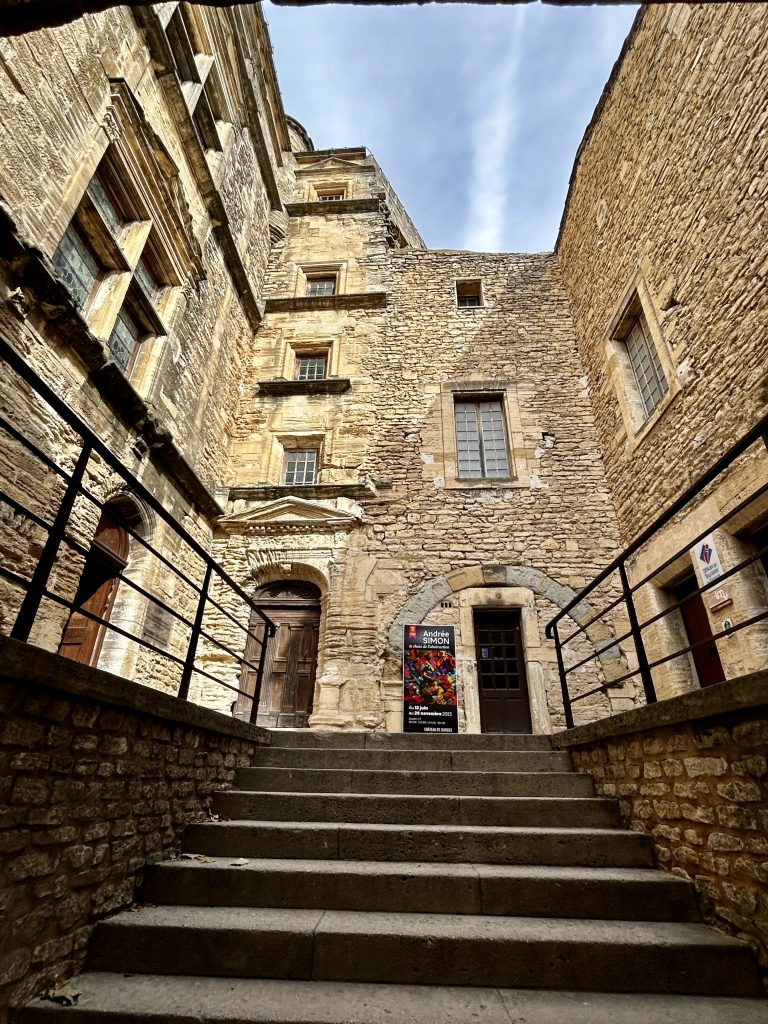
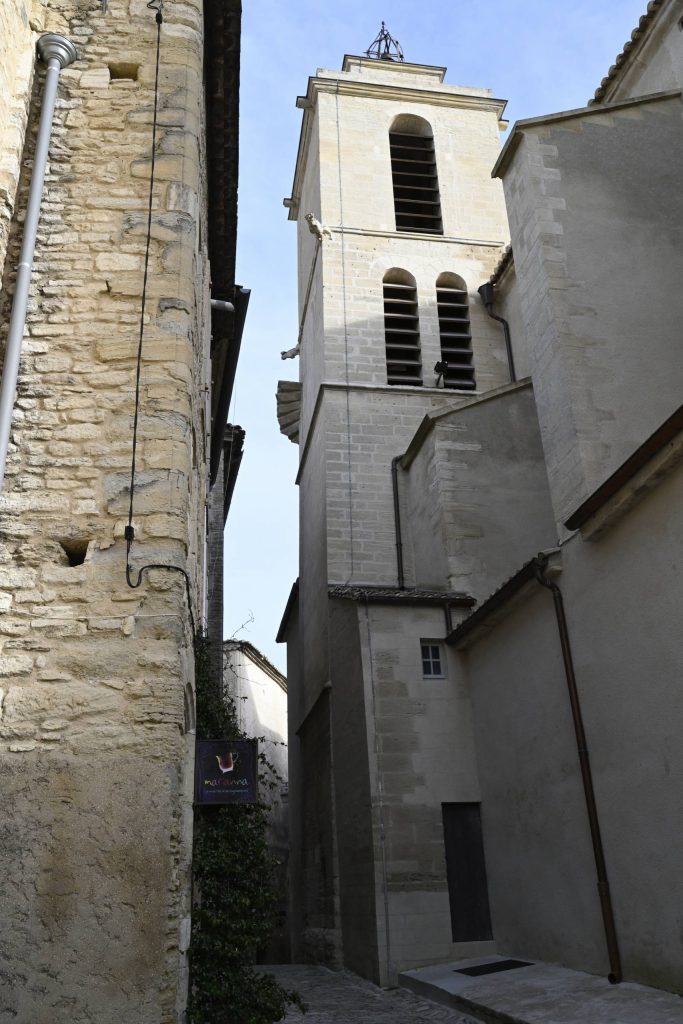
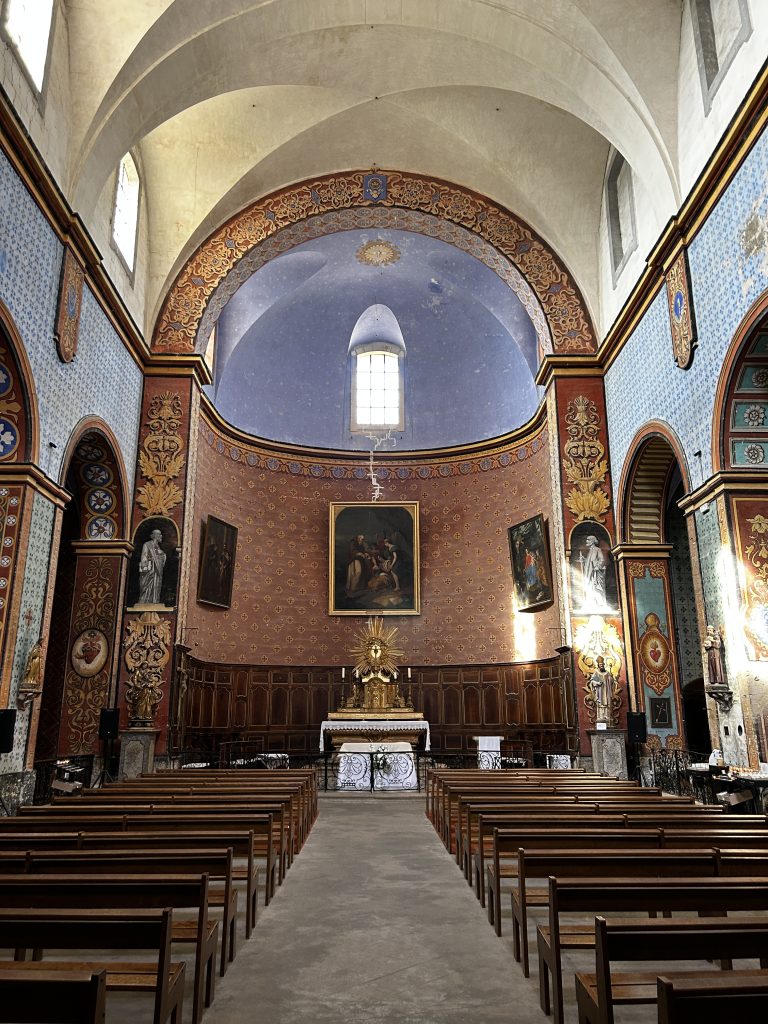
We didn’t stay in Gordes for very long. It’s a small village with very little to offer in terms of local attractions and it can be explored in just a few hours. We might have stayed longer had we visited on a Tuesday when the weekly farmer’s market takes place but, having said that, I shudder at the thought of how busy the place would be on market day.
Anyway, we had decided that for old times sake we would revisit one of our favourite small towns in France, Saint Remy de Provence. No amount of tourists will deter me from going there…

